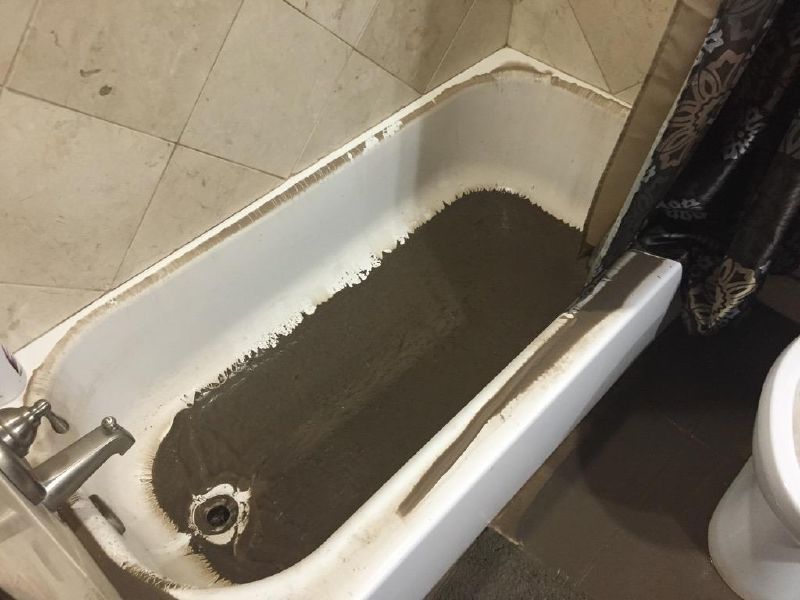What are your thoughts with regards to What To Do If Sewage Starts Backing Up Into the Shower?

Sewer back-up in the bath tub can be an upsetting and unsanitary problem for any type of house owner. Not only is it inconvenient, but it additionally presents serious health dangers and suggests underlying problems with the plumbing system. Recognizing why sewer is turning up through the bath tub is crucial for taking proper activity to resolve the trouble successfully.
Intro to the Issue
Typical Factors for Sewer Backup
Blockages in the Sewage System Line
Among one of the most typical root causes of sewer back-up is a clog in the sewer line. This can take place due to the buildup of particles, grease, or foreign objects in the pipes, avoiding correct flow and causing sewer to back up into your tub.
Tree Origin Invasion
Tree origins seeking wetness and nutrients can penetrate drain lines via little fractures or joints. With time, these roots can grow and increase, causing substantial damages to the pipelines and resulting in sewer back-up concerns.
Understanding the Problem
When sewage starts backing up into the bath tub, it's a clear indication of an issue with the water drainage system. The wastewater that should be flowing away from your home is rather discovering its way back into your space, which can bring about significant damage and carcinogen.
Possible Causes
Several elements can contribute to sewer back-up in the bathtub. From clogs in the sewer line to concerns with the plumbing infrastructure, identifying the origin is essential for finding a service.
Aging Infrastructure
Older homes may have outdated plumbing systems that are more vulnerable to rust, cracks, and degeneration. As pipes age, they come to be much more vulnerable to leakages and clogs, boosting the likelihood of sewage backup incidents.
Heavy Rainfall or Flooding
During durations of heavy rainfall or flooding, the drain system might end up being overloaded with excess water, causing back-ups and overflows. This can cause sewage backing up right into bathtubs and other fixtures inside the home.
Indicators of Sewage Backup
Foul Odors
Unpleasant odors rising from drains pipes or fixtures, especially in the bathroom, may suggest sewage backup problems. These smells are often solid and persistent, signaling a problem that requires immediate attention.
Slow Draining Fixtures
Bathtubs, sinks, and toilets that drain pipes gradually or otherwise at all could be experiencing sewage backup. If numerous fixtures are influenced all at once, it's most likely that the issue originates from a typical factor, such as the primary sewage system line.
Gurgling Noises
Unusual gurgling or gurgling sounds originating from drains when water is running elsewhere in your house are a measure of air trapped in the plumbing system. This air buildup can result from sewage back-up and must be examined without delay.
Health And Wellness Risks Related To Sewage Backup
Contamination of Supply Of Water
Sewer back-up can pollute the water system in your home, positioning a serious health risk to you and your family. Exposure to contaminated water can cause intestinal concerns, skin infections, and various other diseases.
Mold and mildew Development
Wetness from sewer backup can produce excellent conditions for mold and mildew growth in your house. Mold and mildew spores can worsen respiratory system problems and cause allergic reactions in delicate individuals, making punctual cleanup important.
Spread of Condition
Sewage has unsafe microorganisms, viruses, and parasites that can cause a series of conditions, including hepatitis, cholera, and gastroenteritis. Entering contact with sewage or infected surface areas places you at risk of infection.
Cleaning Up After Sewer Back-up
Sanitation Procedures
Completely decontaminate and sanitize affected locations after sewage back-up to remove unsafe germs and prevent mold and mildew growth. Usage suitable cleansing items and safety equipment to guarantee secure and reliable clean-up.
Restoration of Impacted Areas
Fix any type of damage to floor covering, walls, or components brought on by sewer back-up. Relying on the degree of the damage, you might need to change carpeting, drywall, or various other materials to restore your home to its pre-loss problem.
Immediate Actions to Take
Turning Off Supply Of Water
In the event of sewer back-up, it's vital to turn off the water supply to avoid additional contamination and damage. Locate the main water shutoff valve in your home and closed it off till the concern can be resolved.
Getting In Touch With a Specialist Plumber
Managing sewer back-up is not a DIY job. Contact an accredited plumber with experience in dealing with sewage-related issues to examine the scenario and execute needed repair work or clean-ups.
Staying Clear Of Contact with Contaminated Water
Till the sewer back-up is fixed, prevent contact with contaminated water to prevent the spread of germs and microorganisms. Put on protective equipment if you have to remain in the damaged location and clean your hands completely afterward.
Preventive Measures
Routine Maintenance of Sewer Lines
Set up normal assessments and upkeep of your drain lines to determine and attend to prospective concerns before they rise into significant problems. This can include cleaning out debris, evaluating for tree root breach, and fixing any type of broken pipelines.
Mounting Backwater Shutoffs
Take into consideration installing bayou valves in your plumbing system to prevent sewage from receding into your home during periods of heavy rainfall or flooding. These valves immediately close when water draws back up, protecting your residential property from contamination.
Correct Disposal of House Waste
Stay clear of purging anything apart from bathroom tissue and human waste down the bathroom to stop clogs and blockages in the sewage system line. Dispose of grease, oil, and various other home chemicals properly to lessen the danger of plumbing issues.
Why Is Water Backing Up in My Bathtub When I Flush My Toilet?
What to do about a sewer line clog
First, don’t bother with plunging. No amount of plunging will dislodge the clog in a sewer line. The clog is too far away. Plungers are for clogs in the toilet itself, not the sewer line. Plus, the most likely causes of a sewer clog are:
Tree roots Flushed toys or feminine products Grease buildup Those items don’t move easily. And in the case of tree roots, the roots need to be cut out of the pipe and the pipe will need to be repaired.
You’ll need a closet auger. A closet auger is a type of plumber’s snake with a protective cover to keep from scratching the delicate porcelain toilet. If the clog is further down, you may need to remove the toilet or use one of your cleanouts to get to the clog.
We also recommend doing a video inspection of the drain to ensure that the cause of the clog has been completely removed. Otherwise, you could have the same problem again in a few days or weeks.
https://mspplumbingheatingair.com/blog/why-is-water-backing-up-in-my-bathtub-when-i-flush-my-toilet

I am just very fascinated by What to Do if Sewage Starts Coming Up Through Your Bathtub and I am assuming you enjoyed reading our blog post. Enjoyed our blog entry? Please share it. Help another person check it out. Thanks a lot for taking the time to read it.
Call Today